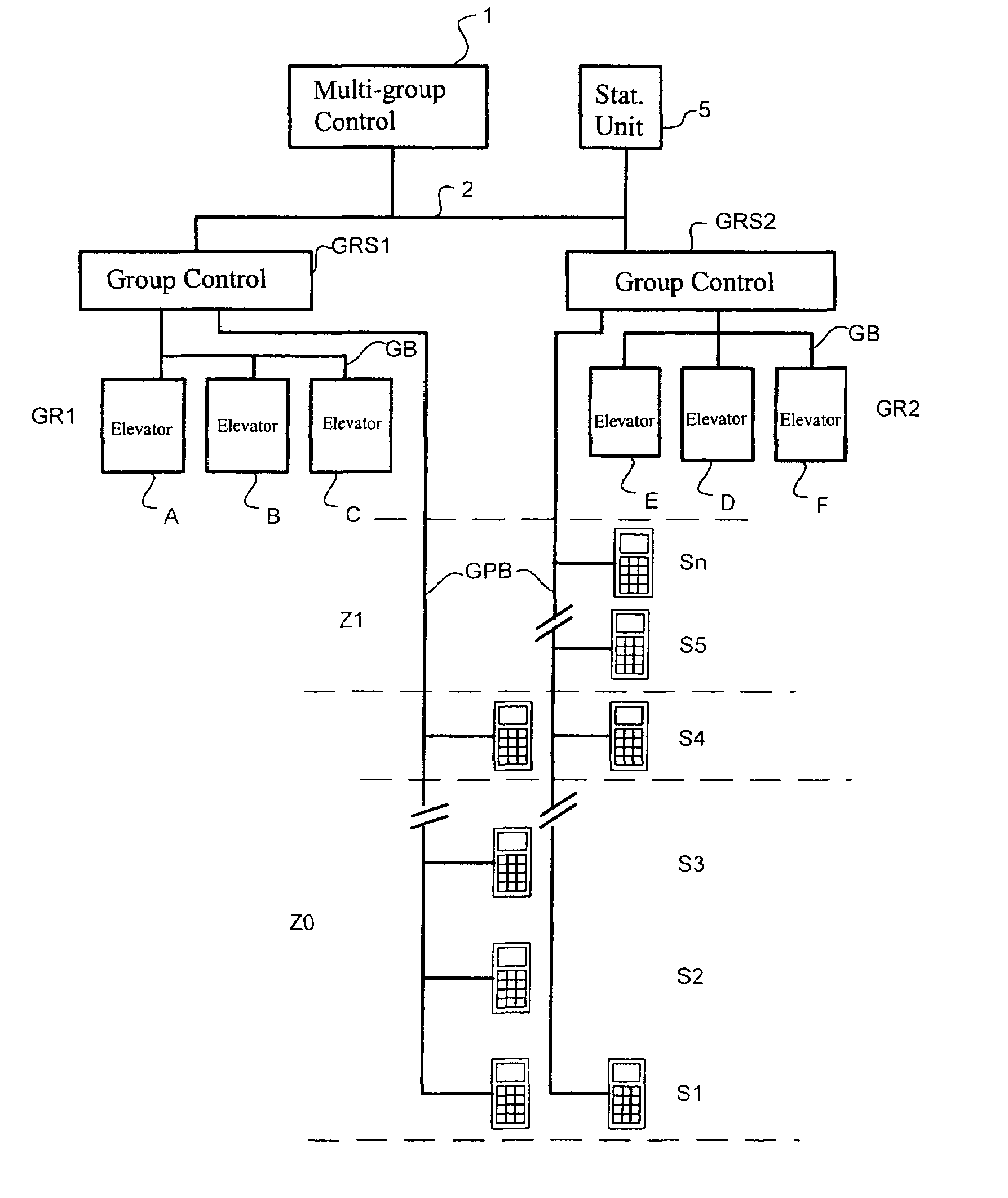Zonally operated elevator installation and method for control thereof
a technology of zonally operated elevators and elevators, which is applied in the direction of elevators, computer control, instruments, etc., can solve the problems of inability to increase the amount of space available on the changeover floor, the possibility of overfilling the changeover floor, etc., and achieve the effect of increasing the transportation capacity
- Summary
- Abstract
- Description
- Claims
- Application Information
AI Technical Summary
Benefits of technology
Problems solved by technology
Method used
Image
Examples
Embodiment Construction
[0027]FIG. 1 shows diagrammatically the construction of an elevator installation. The building is divided into several zones, Z1, Z0. Each zone comprises several floors. Zone Z0 comprises floors S1 to S4, and zone Z1 comprises floors S4 to Sn. In these zones, the elevators A–F are used for the transportation of passengers. The elevators A–F are divided into elevator groups GR1 and GR2. The elevators are controlled via a destination-call control device ZEG (not shown). The elevator group GR1 transports the passengers in zone Z0 from floor S1 to S4, and the elevator group GR2 transports the passengers in zone Z1 from floor S4 to Sn. It is also possible to reach floor S1 with the elevator group GR2. The elevators of the first elevator group GR1 are controlled by group controls GRS1, and group controls GRS2 control the elevators of the second elevator group GR2. The elevators are connected via a group bus GB to the group controls GRS1 and GRS2, respectively. The individual floors are co...
PUM
 Login to View More
Login to View More Abstract
Description
Claims
Application Information
 Login to View More
Login to View More - R&D
- Intellectual Property
- Life Sciences
- Materials
- Tech Scout
- Unparalleled Data Quality
- Higher Quality Content
- 60% Fewer Hallucinations
Browse by: Latest US Patents, China's latest patents, Technical Efficacy Thesaurus, Application Domain, Technology Topic, Popular Technical Reports.
© 2025 PatSnap. All rights reserved.Legal|Privacy policy|Modern Slavery Act Transparency Statement|Sitemap|About US| Contact US: help@patsnap.com



